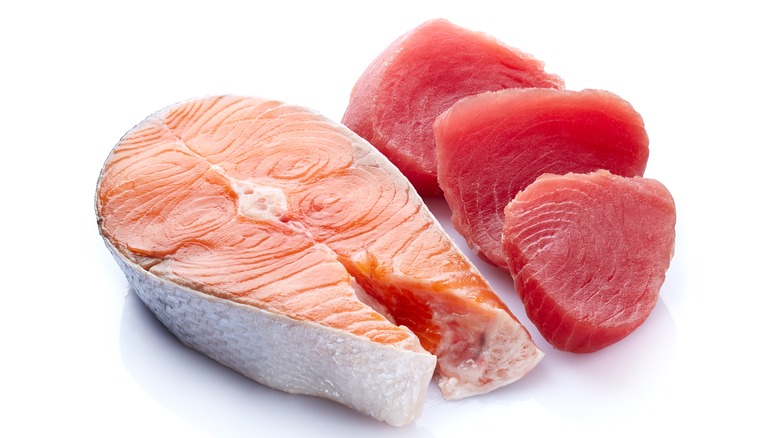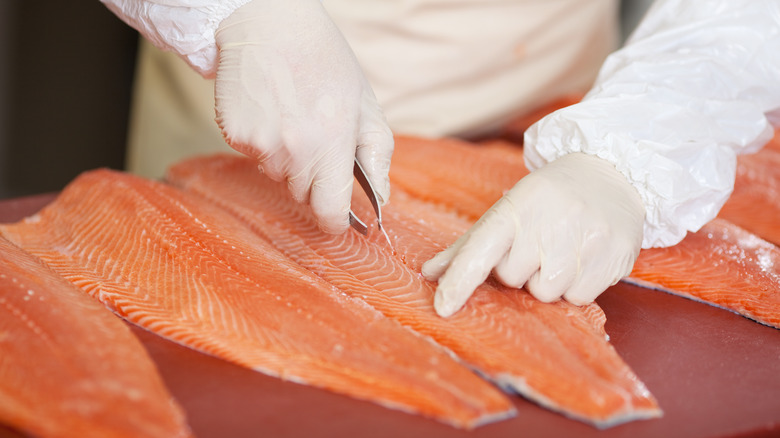Salmonella Risk Prompts Company To Recall Over 300,000 Pounds Of Fish
If you enjoy sushi or sashimi when dining out, you may want to check with your server to ensure that the restaurant is updated on a rash of salmonella infections that the FDA has linked to fresh, raw seafood sold by Mariscos Bahia, Inc. Nobody has died from the recent outbreak, but 33 people have become ill, and 13 of them required hospitalization.
Diners who eat raw fish might already know that there is some risk involved. A common cause of Salmonella infections is meat or seafood that hasn't been fully cooked before consumption, per the Mayo Clinic. In fact last year, the consumption of "raw and cooked" fish from restaurants and grocery stores was tied to a salmonella outbreak that caused 115 illnesses across 15 different states (via the CDC).
This year, people have reported symptoms of Salmonella poisoning after eating raw salmon that had been purchased by restaurants in California and Arizona. Most cases have occurred in these states, although one was also recorded in Illinois. The FDA started an investigation that led it to the Mariscos Bahia facilities in Pico Rivera, California, and Phoenix, Arizona. After taking samples from the California location, the agency detected Salmonella Litchfield. One or more samples were a match for the strain causing the outbreak. Fresh tuna, Chilean seabass, swordfish, and halibut handled at Mariscos Bahia facilities may also be carrying the bacteria. These have also been included in the recall.
Mariscos Bahia recalled over 300,000 pounds of fish
According to Food Safety News, the potential Salmonella contamination prompted Mariscos Bahia, Inc. to invoke a voluntary recall of over 300,000 pounds of fish that were received by 179 buyers in California and Arizona. The affected seafood was shipped on June 14 or later, according to the FDA, which warns against serving or selling the fish even if the products were stored in a freezer. It also recommends washing and sanitizing all surfaces that may have come into contact with the seafood.
Food tainted by Salmonella bacteria can be hard to spot, as it can appear or even taste safe, making it important to properly dispose of the products regardless of their appearance. Associated codes and specific recall numbers for the fish products are posted on Food Safety News. Many of them came in the form of fillets or loins. Consumers who may have eaten recalled fish should contact a medical professional if they're experiencing symptoms of a Salmonella infection, such as fever or cramping in the abdomen.

